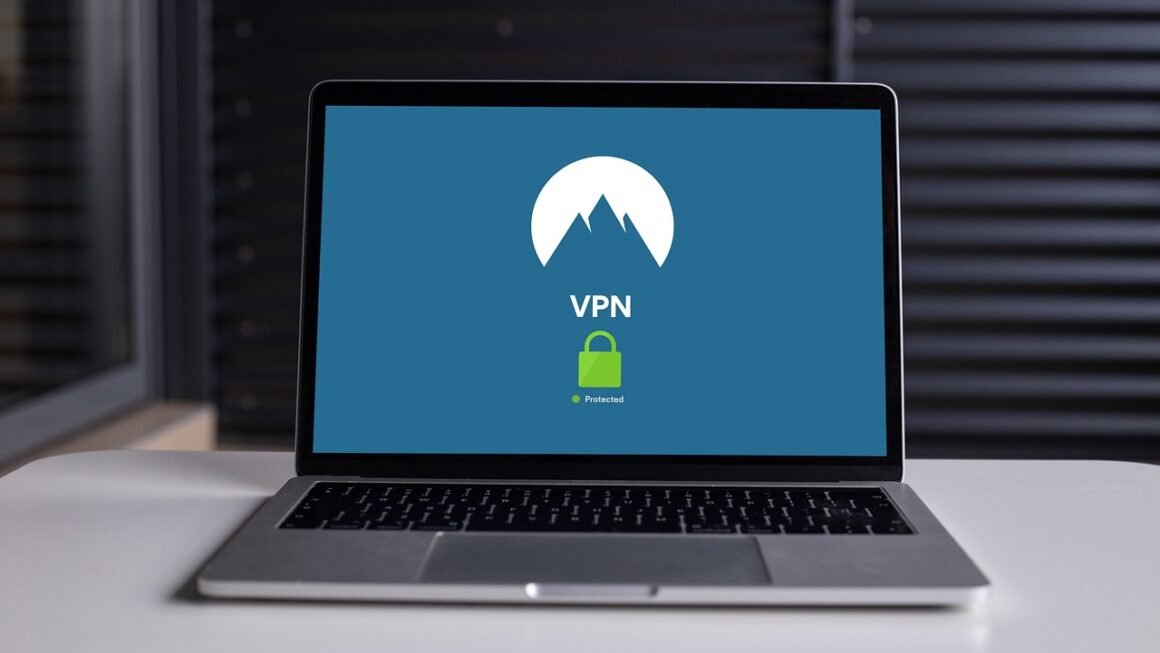In today’s interconnected digital world, the importance of robust cybersecurity cannot be overstated. From safeguarding sensitive customer data to protecting critical infrastructure, organizations of all sizes are facing an ever-increasing barrage of cyber threats. A well-defined and implemented cybersecurity policy is no longer a luxury, but an absolute necessity for survival and success. This blog post will delve into the key components of a comprehensive cybersecurity policy, providing practical guidance and actionable insights to help you protect your organization from potential threats.
Understanding the Need for a Cybersecurity Policy
The Rising Tide of Cyber Threats
Cyberattacks are becoming more frequent, sophisticated, and costly. According to recent statistics, the average cost of a data breach is in the millions of dollars. Beyond the financial implications, data breaches can also damage a company’s reputation, erode customer trust, and lead to legal liabilities.
- Example: A small business that experiences a ransomware attack could face significant downtime, data loss, and financial strain, potentially leading to closure.
- Data Point: Studies show that a significant percentage of small businesses never recover after a major cyberattack.
Benefits of a Strong Policy
Having a comprehensive cybersecurity policy in place offers a multitude of benefits:
- Reduced Risk: Proactively identifying and mitigating vulnerabilities minimizes the likelihood of successful cyberattacks.
- Compliance: Many industries and regulations require organizations to have specific cybersecurity measures in place.
- Improved Security Posture: A policy establishes a framework for consistent security practices across the organization.
- Enhanced Reputation: Demonstrates a commitment to protecting data and maintaining customer trust.
- Increased Awareness: Educates employees about their roles and responsibilities in maintaining cybersecurity.
Key Elements of an Effective Policy
An effective cybersecurity policy should address the following key areas:
- Scope and Objectives: Clearly define the policy’s purpose, scope, and intended outcomes.
- Roles and Responsibilities: Assign specific responsibilities to individuals and teams for implementing and enforcing the policy.
- Risk Assessment: Regularly assess potential cybersecurity risks and vulnerabilities.
- Access Control: Implement measures to restrict access to sensitive data and systems.
- Data Protection: Establish procedures for protecting data at rest and in transit.
- Incident Response: Develop a plan for responding to and recovering from cybersecurity incidents.
- Training and Awareness: Provide regular training to employees on cybersecurity best practices.
- Policy Enforcement: Outline consequences for violating the policy.
Core Components of a Cybersecurity Policy
Access Control and Authentication
Limiting access to sensitive data and systems is critical for preventing unauthorized access and data breaches. Strong authentication methods are essential for verifying user identities.
- Multi-Factor Authentication (MFA): Require users to provide multiple forms of identification, such as a password and a code from their smartphone, to access sensitive systems.
Example: Using MFA for accessing email, VPN, and cloud services significantly reduces the risk of account compromise.
- Least Privilege: Grant users only the minimum level of access necessary to perform their job duties.
Example: A marketing employee should not have access to financial records unless it is absolutely necessary.
- Password Management: Enforce strong password policies, including minimum length, complexity requirements, and regular password changes.
Tip: Use a password manager to securely store and manage passwords.
- Account Lockout Policies: Implement account lockout policies to prevent brute-force attacks.
Example: Lock an account after a certain number of failed login attempts.
Data Protection and Encryption
Protecting data at rest and in transit is essential for maintaining confidentiality and integrity. Encryption is a powerful tool for safeguarding sensitive information.
- Encryption at Rest: Encrypt data stored on hard drives, servers, and cloud storage services.
Example: Using BitLocker on Windows or FileVault on macOS to encrypt hard drives.
- Encryption in Transit: Use secure protocols such as HTTPS and TLS to encrypt data transmitted over the internet.
Example: Ensure that all websites use HTTPS to protect data exchanged between the website and users.
- Data Loss Prevention (DLP): Implement DLP solutions to prevent sensitive data from leaving the organization’s control.
Example: Preventing employees from emailing sensitive customer data to unauthorized recipients.
- Data Backup and Recovery: Regularly back up critical data and store backups in a secure location.
Tip: Test the backup and recovery process regularly to ensure its effectiveness.
Incident Response Plan (IRP)
A well-defined incident response plan is crucial for minimizing the damage caused by cybersecurity incidents.
- Identification: Establish procedures for identifying and reporting security incidents.
Example: Train employees to recognize phishing emails and report them to the IT department.
- Containment: Isolate affected systems to prevent the incident from spreading.
Example: Disconnecting an infected computer from the network.
- Eradication: Remove the malware or vulnerability that caused the incident.
Example: Removing a virus from an infected computer.
- Recovery: Restore affected systems and data to their pre-incident state.
Example: Restoring data from backups after a ransomware attack.
- Lessons Learned: Conduct a post-incident analysis to identify areas for improvement.
Example: Reviewing security logs to identify the root cause of the incident.
Training and Awareness
Employee awareness is a critical component of a successful cybersecurity program. Regular training can help employees recognize and avoid common threats.
- Phishing Awareness: Train employees to identify and avoid phishing emails.
Example: Conducting simulated phishing attacks to test employee awareness.
- Social Engineering: Educate employees about social engineering tactics and how to avoid falling victim to them.
Example: Teaching employees to verify the identity of individuals requesting sensitive information.
- Password Security: Reinforce the importance of strong passwords and safe password management practices.
Tip: Provide employees with resources and tools for creating and managing strong passwords.
- Data Security: Train employees on how to handle sensitive data securely.
Example: Providing guidelines on storing and transmitting confidential information.
Policy Implementation and Enforcement
Regular Review and Updates
Cybersecurity threats are constantly evolving. It’s essential to review and update the cybersecurity policy regularly to address emerging threats and vulnerabilities.
- Annual Review: Conduct a comprehensive review of the policy at least annually.
- Incident-Driven Updates: Update the policy after each security incident to address any identified gaps or weaknesses.
- Technology Updates: Review the policy whenever new technologies are introduced to the organization.
Enforcement Mechanisms
The cybersecurity policy must be enforced consistently to be effective.
- Monitoring and Auditing: Implement monitoring and auditing mechanisms to detect policy violations.
Example: Using security information and event management (SIEM) systems to monitor network traffic for suspicious activity.
- Disciplinary Actions: Establish clear consequences for violating the policy.
Example: Providing warnings, suspensions, or termination for employees who violate the policy.
- Regular Security Assessments: Conduct regular security assessments to identify vulnerabilities and ensure compliance with the policy.
Tip: Engage a third-party cybersecurity firm to conduct independent security assessments.
Conclusion
In conclusion, a comprehensive cybersecurity policy is an essential tool for protecting organizations from the ever-increasing threat landscape. By implementing strong access controls, protecting data through encryption, developing a robust incident response plan, and providing regular training to employees, organizations can significantly reduce their risk of cyberattacks and maintain a secure digital environment. Regular review, updating, and consistent enforcement of the policy are crucial for ensuring its ongoing effectiveness. Proactive and diligent cybersecurity measures are no longer optional; they are a fundamental requirement for survival and success in today’s interconnected world.



